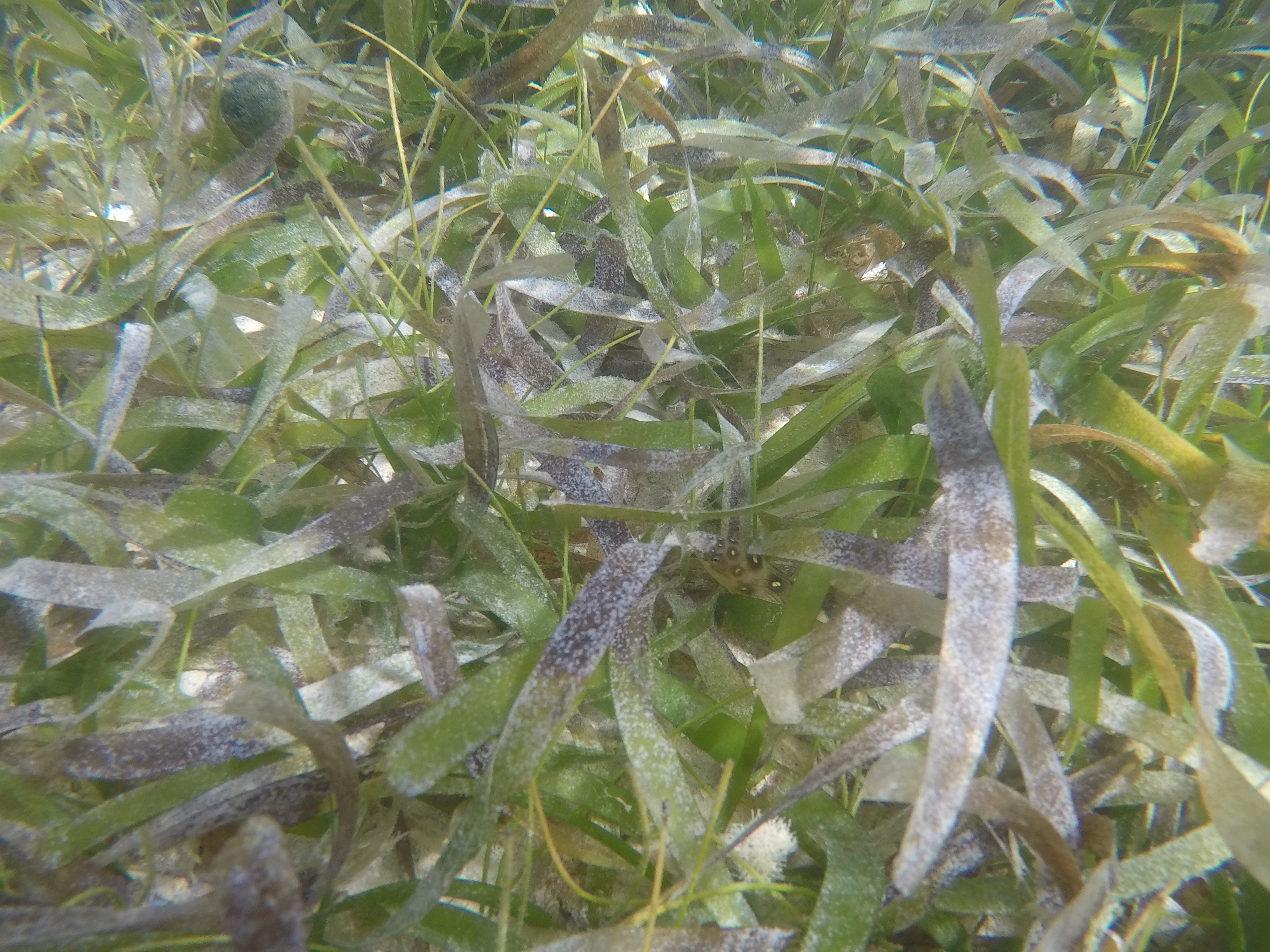
Seagrass meadow
Unlike mangroves, which are clearly visible, and emblematic coral reefs, seagrass meadows form a little-known natural habitat. However, they play a fundamental role for coastal marine environments. A place of life, food and refuge for the juveniles of many species of fish, they also participate in the protection of our coasts during cyclones.
WHAT IS IT?
We call seagrass meadow a set of phanerogamous plants, that is to say whose reproductive organs are visible, unlike algae, is called seaweed. They are present in the coastal shallows. There are seven different species in the Caribbean, four of which are endemic.
Guadeloupe is mainly home to two remarkable species:
- Thalassia testudinum – or “turtle grass” – which can be found up to ten meters deep, and
- Syringodium filiform – “filament grass” – up to thirty meters deep.
Located between mangroves and coral reefs, the meadows play an essential and complementary role to those of these environments. Their location allows the stabilization of the sea bed and limits coastal erosion: they retain sediments and attenuate cyclonic swell and currents during storms.
They act as a refuge and pantry for many species of fish that feed on the nutrients thus trapped. In this way, they guarantee the biodiversity of the coastal shallows: the good health of the meadows allows fishing activities to be maintained (in Guadeloupe, each inhabitant consumes 35 kg of fish per year).
Relatively close to the surface, the meadows are also capable of photosynthesis and store CO2 (for Guadeloupe, about 15% of CO2 in the marine environment is stored in this way).
WHERE DO WE FIND THEM?
Seagrass beds live between 5 and 30 meters deep. In Guadeloupe, they can be found in the Grand Cul-de-sac Marin, the Petit Cul-de-sac Marin, along the south side of Grande-Terre, and around the Basse-Terre.
There are 968 hectares of dense meadows and 332 hectares of low density meadows.
ASSOCIATED FAUNA AND FLORA
Microorganisms are found in seagrass meadows, which cling to them and which many species are fond of.
In Guadeloupe, there are nearly 120 species of fish that have been recorded in the areas of seagrass meadows! Juveniles are particularly represented, especially near mangrove areas.
Among the remarkable fauna of this natural environment are green turtles, pink conch and sea urchins.

WHAT THREATS?
In Guadeloupe, only 15% of the seagrass beds are in good health. The state of health of a seagrass bed can be determined by various criteria, including the evolution of its surface and the animal species present, the presence of algae or excessive sedimentation.
They must face two types of threats:
- Climate change (increase in water temperature, rise in sea level and increased violence of cyclones) which subjects the meadows to risks of eutrophication (invasion of algae), uprooting, and excessive sedimentation preventing the process of photosynthesis.
- The impact of human activities is important: constructions on the coast, pollution (especially by plastic waste), sports and leisure activities (anchoring of boats), lack of knowledge of the environment and its fragility.
PROTECTION STATUS
Caribbean seagrass meadows are under the protection of the “Convention for the Protection and Development of the Marine Environment of the Wider Caribbean Region”, signed in Cartagena (Colombia) on March 24, 1983.
Three international protocols have clarified the scope of application of the Convention:
- in 1984 a protocol for international cooperation in the event of oil pollution (signed by France in 1985);
- in 1990 : a protocol relating to the fauna and flora of protected areas (signed by France in 2002);
- in 1999 : a protocol on pollution from land-based sources and activities (signed by France in 2007).

